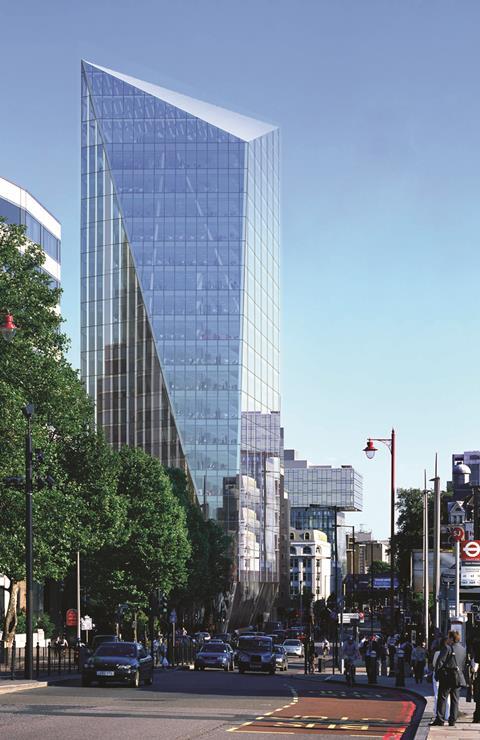Great Portland Estates’ head of projects on the firm’s pipeline and paying subcontractors on time
James Pellatt, head of projects, Great Portland Estates
How do you see market conditions changing over the next year?
I think a degree of confidence is returning to the construction market. We anticipate contractors will see some inflation towards the back end of the next 12 months – not by Christmas but by summer 2014.
What’s your pipeline looking like?
We’ve got a strong construction pipeline through to 2020 with 24 schemes, six of which are already committed. We’ve just announced a pre-let with law firm Bird & Bird for a £40m scheme at 12/14 New Fetter Lane, and we will start demolition this summer with practical completion scheduled for late 2015.
In the near term we also have 20 James’s Street (50,400 ft2) which could start this year, and three projects for 2014, including a major 414,100 ft2 scheme on Rathbone Place worth £170m. In the pipeline for 2015 is 73/89 Oxford Street (88,100 ft2), and Hanover Square (208,000 ft2) and 148 Old Street (100,000 ft2) are both planned to start in 2016. In total, our planned schemes cover 1.7 million ft2, with 88% in the West End. So we are approaching the market with gusto.

Are you changing the way you work with your supply chain, and if so how?
We won’t be using single-stage design-and-build tendering any longer. Wherever possible, we will always go with a two-stage tender process, to make sure we can engage not only with appropriate main contractors but appropriate trade contractors as well. It’s very important to us to be able to achieve the right quality of product, and we will try to secure innovation and other advantages from collaborating more closely with the supply chain.
We will look at main contractors’ payment terms for subcontractors, and if we feel they’re too unfair, we will have to seriously consider whether will use the main contractor. We’re not particularly keen on the pattern of extending payment terms for subcontractors. We always meet our payment obligations within 14 days and we don’t see why subcontractors can’t be paid within that time too.
How do you go about procuring construction work?
We always use an appropriately sized contractor for the project, and we always have the same size contractors bidding for the work. We’ll tell them who they’re bidding against – we’re open because the market finds out anyway. If someone is bidding for our work, they have a fair chance of winning it. We wouldn’t ask them to bid if they didn’t have a chance, partly because we don’t want to waste people’s time. The cost of bidding is prohibitively expensive, and that does cause us concern.
What are your priorities when selecting contractors?
They must have a good understanding of the work. Large contractors must have proven delivery capability, and demonstrate they can deliver on the BIM model we provide them. Smaller providers must show that they can work with us and meet the social criteria we like to achieve on all of our projects. Meeting environmental standards – assessing timber accreditation and that sort of thing – can be quite hard on smaller contractors but it’s what they need to do to help us meet our CSR obligations.



























1 Readers' comment